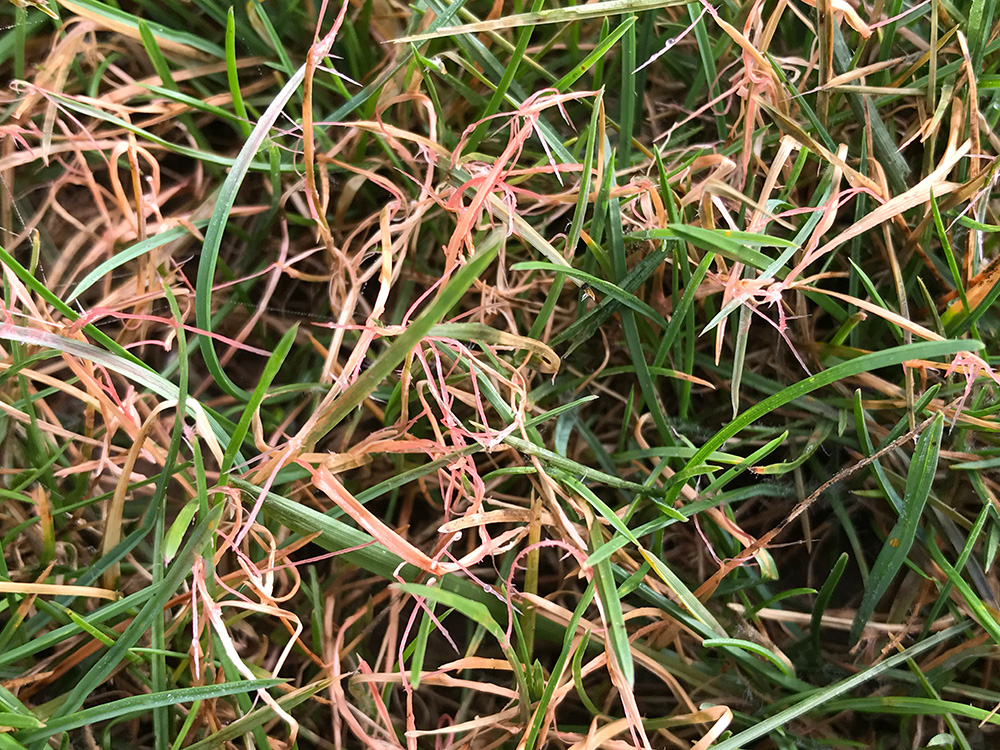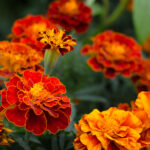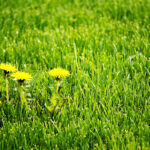
Red Thread develops in circular or irregular patches from 4 to 24 inches in diameter. These patches are tan or bleached white in color. From a distance, the patches usually have a reddish appearance, due to the presence of thick, red strands of fungal growth. It is through production of these “red threads (sclerotia)” that the fungus spreads to healthy plants and survives unfavorable conditions.
The Red Thread fungus is able to cause disease at temperatures ranging from 40 to 80°F but develops most rapidly at approximately 70°F. This fungus affects grass that is growing slowly for any reason: inadequate fertilization, drought stress, cool weather, low light intensity, excessive traffic, pests or environmental stresses.
Red Thread is most severe in the spring and fall, when extended periods of cool, wet, and overcast weather slow growth of the lawn and favor growth of the pathogen.
How to control Red Thread:
- Test soil
- Water deeply and infrequently. Never during the later afternoon or early evening.
- Increase air movement and light exposure by pruning branches and other vegetation.
- Remove clippings from affected areas when the disease is active to reduce spread of the disease and wash infected clippings from equipment before entering uninfected areas.
- Remove clippings from affected areas when the disease is active to reduce spread of the disease and wash infected clippings from equipment before entering uninfected areas.
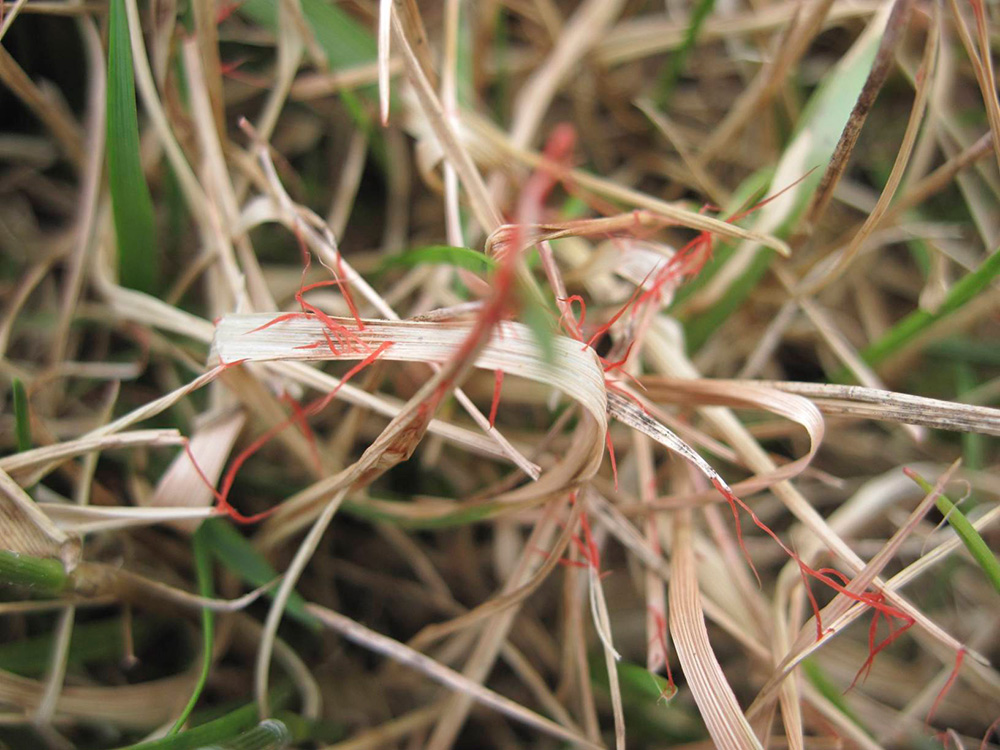
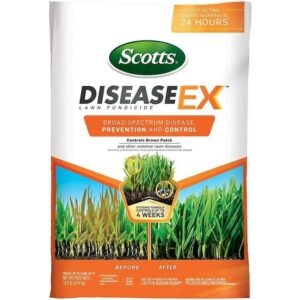
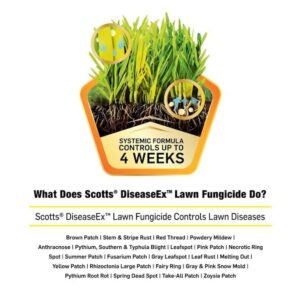
Scott’s MiracleGro Recomends
Scotts® DiseaseEx™ Lawn Fungicide offers a formula to cover a wide range of problem lawn diseases. This new product is fast acting and continues to control lawns diseases for up to 4 weeks.
Photos and content generously provided by The Lawn Institute

